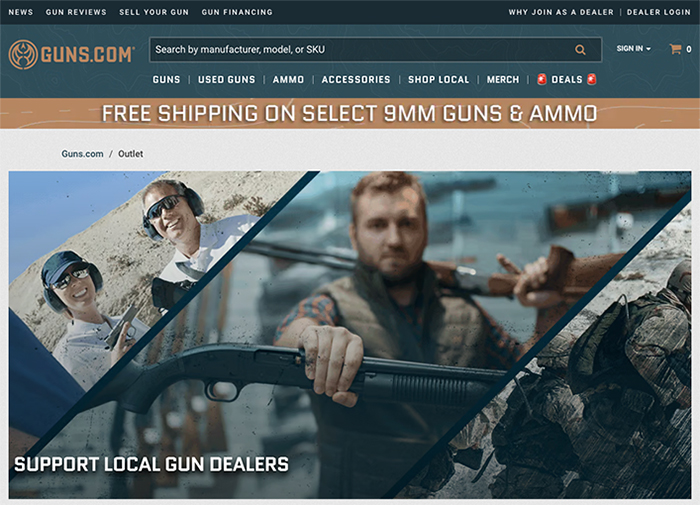5 Ways To Know Thy Customer Better
Start and run whatever business you want, master operations and logistics, hire only the best employees, promote your business with sleek marketing across social media and more. You can do all those things right, but if potential customers don’t ever become actual paying customers, very little of it matters.
Without question: Getting customers from potential to paying is one of the goals of business. If you don’t have someone to pay for the product or service, there isn’t going to be revenue. And with no revenue, there isn’t going to be a business.
A Positive Spin
Let’s dwell on the positive: When a customer does decide to pay for your product or service, that’s great. We love cha-ching! But it’s important to ask yourself every now and again why a customer decided to purchase a particular product or service. “They liked it” or “they wanted it” isn’t inaccurate, but it isn’t really enough info. Perhaps they thought it was the best value or the best deal. Perhaps their situation demanded a fast solution and you were the first to provide it for them. Maybe they wanted to do business with another business but the other business couldn’t. Or, perhaps the customer wasn’t buying for themselves but for someone else.
Alternatively, maybe the last 10 customers purchased from you because they heard or read there would be a limit on whatever it is you’re selling and a quick online search brought up your business name.
Things change. Customers change. Adaptation is critical and can be planned in advance.
The point is: Customers buy for many reasons. Until you get a grasp of what those reasons may be, you won’t know and won’t be able to respond to, nor appeal to, the variety of customer motivations out there. Some business owners or managers may be tempted to say, “Who cares why they buy as long as they’re buying!” However, even in times of high demand, it can pay to know why customers are coming through your door — mainly so you can plan for those times when demand decreases.
Our industry knows all about the power of supply and demand. The best businesses know about the power of knowing the customer — what they think, what motivates them and what they are about. Ultimately, what causes them to put their money in your hand for your goods or services? You may know your customers pretty well — and you should.
Here are five ways to know your customers better.
1. Ask all of your employees (or at least the sales staff) to create a written description of the customers being sought and what motivates them.
Explain the whole “get to know the customer better” enterprise you’re embarking on or just ask for this without any additional context. In any case, the idea is to hear from your employees or sales staff their viewpoints on customers. Gather this by interviewing the employees and writing down the responses or by having them write it out. In either case, it helps to have a list of typical questions on hand: How would customers describe our business to a friend? What do customers think of when they think of our brand? What would customers say is our worst attribute? Our best?
The outcome of this step will vary. There may be identical answers across the board or a variety. It will be enlightening to hear from your staff and they’ll probably appreciate the opportunity to provide their insights. But the real challenge (and value) comes in the next phase.
2. Find and talk to actual customers to see if you’re right.
It’s hard to beat real conversations with real customers. Here’s where it’s possible to learn the variety of reasons and motivations for them visiting, and spending their money at your business. Survey and question your customers informally as they’re in the store or more formally at an event designed just for them to provide some input while, for example, trying out a new product or perhaps going through a training exercise.
Collect the customer information using a pre-made survey form you fill out based on interactions with them. Show them the form and the questions and the answers — keep it simple, about 10 questions at most — and provide some kind of incentive for them taking the time with you to complete. Tell them why you’re doing this: To improve customer service.
Once several customer responses are gathered, compare them to the answers provided by employees and sales staff. In some cases, you’ll be able to make 1:1 correlations between the answers — sales staff reported Customer A purchased because of this, while Customer A said they purchased because of that. Both may be true; the data simply provides a look into the complexity of customer motivations or rationale. In this step you’re not really trying to prove the viewpoint of an employee right or wrong. Rather, you’re ultimately trying to get employees to hear from the customers and see how the customer thinks.
3. Create customer personas.
As you interact with employees and customers, it’s likely a few customer details will appear again and again. You may have customers who consistently research online, insist on personal interaction with an employee, are very analytical, more emotive, and customers who are female, male, older, younger, active, sedentary and on and on. Identifying typical customers and their attributes, demographics, habits or preferences is a part of identifying what marketers call a persona. Your business likely has customers comprised of more than one persona.
For example, JT’s Tactical Gear (a fictional company) has these customer personas: a buyer for law enforcement who is required to get multiple quotes and choose the lowest price; a hobbyist who belongs to an airsoft club who loves to visit the store just to see what’s new; and a new gun owner who is interested in concealed carry techniques and gear. Each of them has different reasons for visiting JT’s Tactical Gear, and different things motivate each of them as well.
The L.E. buyer needs pricing and lots of other data and has little use or time for marketing collateral. The hobbyist, however, picks up every flyer displayed on the counter. The new gun owner has a limited budget and is likely shopping the store only to price hunt; they plan to buy online. Add in all the other variables such as gender, age, lifestyle and so on and profiling them as a customer sounds quite daunting — unless you’re doing Step 1 and Step 2 and taking careful notes, developing as many personas as needed.
Knowing about these three imaginary personas, the owner/manager of the fictional JT’s Tactical Gear can now start to craft sales tactics and messaging to each of the potential customers.
4. Train employees or sales staff to think through sales opportunities in light of these personas.
Personas in hand, take this information to your employees and staff and find ways to think through how to serve each of these types of customers. This is where you as a business leader have to be willing to let the people in the room share ideas and insights on how to reach these types of customers. Put the information out there, be willing to refine it and realize additional personas you haven’t even thought of yet will probably be created.
Create a list of three sales and marketing and customer service tactics to use on each persona. But don’t say you’re going to provide clear product and service information. Get more detailed based on each persona. For the law enforcement buyer, say you’re going to provide him or her with a quarterly report on pricing for the materials purchased in the past few years. For the new gun owner, say you’re going to create an event where free training is provided and they can show up and ask as many questions they want.
It’s not so much a training session where you or another expert are providing an opinion on how to sell. It’s more a session where everyone takes the time to learn more about what is already known about your customers. You’re training yourself and your employees to think like a customer.
5. Do this exercise twice a year.
Things change. Customers change. Adaptation is critical and can be planned in advance. It’s why doing this customer exercise should occur at least twice a year. As a bi-annual event, you and your employees will not only know it’s on the company calendar, but will begin actively thinking about customers between the events.
Remember, customers buy for varied reasons — and sometimes the same customer buys for two or more different reasons. Yes, it’s great to sit back and watch the sales roll in, but it’s a great exercise to get employees and customers providing the reasons behind those sales, capturing customer personas and then training on it twice a year. In the end, this customer exercise may improve how you turn potential customers into paying customers.
Dealers, are there key personas your store targets? Let the SI team know: comments@shootingindustry.com





